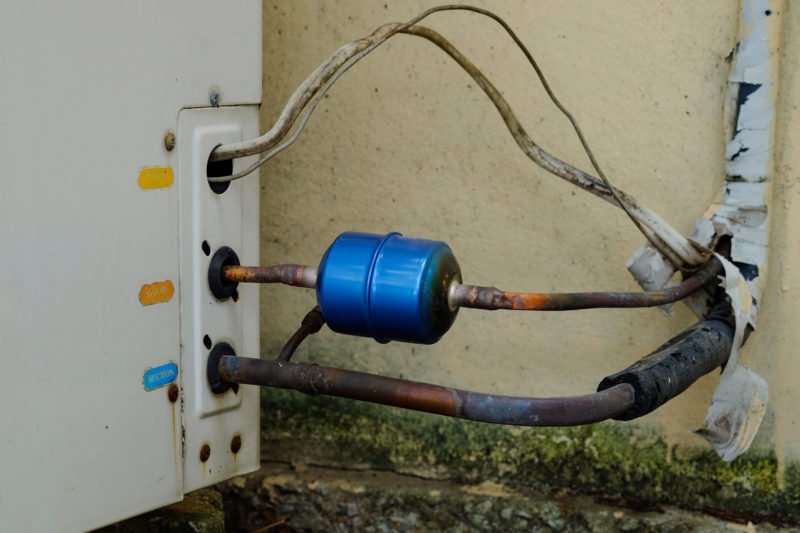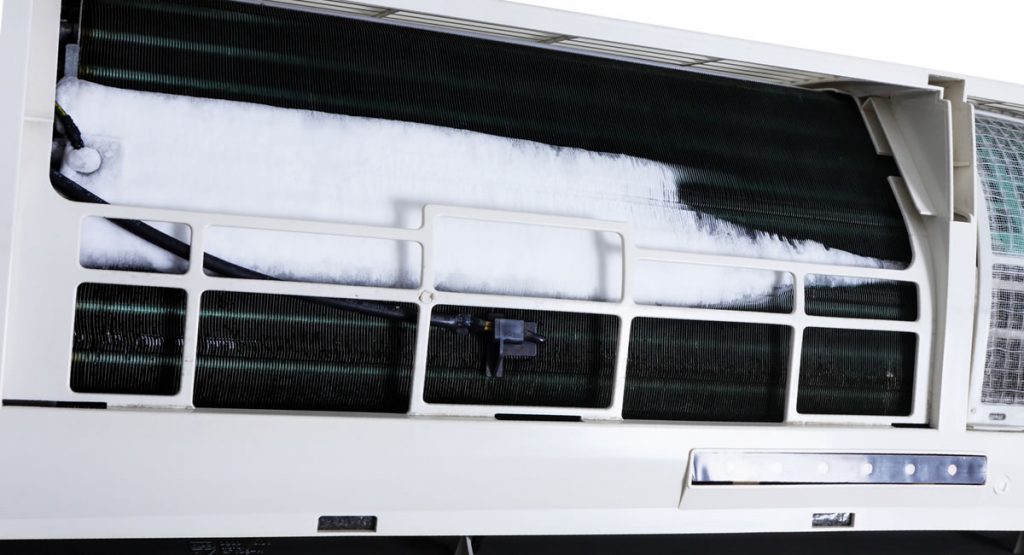Steps to Take If My AC Pipe Is Frozen - Quick Solutions for Thawing
Steps to Take If My AC Pipe Is Frozen - Quick Solutions for Thawing
Blog Article
We have discovered this great article on Air Conditioner Frozen? How To Fix your Frozen AC Line below on the web and accepted it made perfect sense to talk about it with you on this page.

Intro
Uncovering that your AC pipeline is iced up can be concerning, particularly during warm summertime when you rely upon your a/c unit one of the most. Understanding what to do in such a scenario is vital to prevent further damage to your air conditioning system and guarantee your convenience inside.
Understanding the Causes
Numerous aspects can contribute to the freezing of an AC pipe. Comprehending these causes can aid you attend to the problem successfully.
Lack of Airflow
One typical cause of a frozen air conditioning pipeline is inadequate air movement. When the airflow over the evaporator coil is restricted, it can create the coil to go down below freezing temperature, resulting in ice development on the pipeline.
Low Refrigerant Levels
Insufficient cooling agent levels in your air conditioning system can also lead to an icy pipe. Reduced refrigerant degrees can cause the stress in the system to drop, bring about the freezing of moisture on the evaporator coil.
Cold Weather Conditions
In cooler environments, freezing temperatures outside can add to the freezing of a/c pipes. If your a/c unit is not effectively insulated or if there are leakages in the ductwork, cool air can infiltrate the system, causing the pipeline to freeze.
Dirty Air Filters
Dirty or blocked air filters can limit air flow in your air conditioning system, leading to different issues, including an icy pipe. It's important to change or cleanse your air filters routinely to make sure correct airflow and avoid ice accumulation.
Indicators of a Frozen Air Conditioner Pipe
Recognizing the indications of a frozen air conditioner pipeline is essential for prompt action.
Decreased Airflow
If you discover a significant decline in airflow from your vents, it could suggest a frozen pipeline.
Ice Buildup on the Pipe
Visible ice accumulation on the cooling agent line or the evaporator coil is a clear indicator of an icy a/c pipeline.
Weird Sounds from the Unit
Uncommon audios, such as hissing or bubbling, originating from your AC system can indicate that there's ice existing on the pipe.
Immediate Actions to Take
When faced with a frozen AC pipe, it's necessary to act swiftly to prevent additional damages to your air conditioning system.
Switching off the air conditioner
The initial step is to shut off your air conditioner to prevent the system from running and exacerbating the concern.
Looking for Blockages
Check the area around the indoor unit for any blockages that might be obstructing air flow, such as furnishings or curtains.
Thawing the Pipe
You can use mild approaches like positioning towels soaked in warm water around the frozen pipe to aid thaw it slowly.
Safety nets
Taking safety nets can help avoid future events of an icy a/c pipe.
Routine Maintenance Checks
Arrange regular upkeep consult a specialist HVAC service technician to guarantee that your air conditioner system is running effectively.
Transforming Air Filters
On a regular basis replace or clean your air filters to avoid airflow restrictions and keep ideal performance.
Protecting Exposed Pipes
If your air conditioner pipes are revealed to cold temperatures, consider protecting them to prevent freezing during winter months.
Looking For Professional Help
If DIY methods fall short to settle the problem or if you're not sure regarding how to continue, it's finest to look for assistance from a certified HVAC specialist.
When DIY Methods Fail
If your efforts to thaw the pipe or address various other concerns are not successful, it's time to contact an expert.
Importance of Hiring a Professional HVAC Technician
A qualified HVAC professional has the expertise and tools necessary to detect and repair problems with your air conditioner system safely and effectively.
Verdict
Dealing with an icy air conditioner pipe can be an aggravating experience, yet understanding exactly how to react can aid decrease damages and restore comfort to your home. By recognizing the causes, identifying the signs, and taking prompt activity, you can effectively address the problem and avoid future occurrences.
G UP? HOW TO FIX IT?
It happens all over America. And the rest of the world probably. It’s the hottest day ever and for some darn reason your AC isn’t cooling the house. You fiddle with the thermostat to try and fix the problem. Nada. All you can do now is go outside and check the AC unit. You make your way there and find your air conditioner unit is frozen! But how?
In this post we’ll cover how you can tell that your air conditioner has frozen (other than the obvious reasons), what could have caused the freeze, and some of the things you can do about your AC freezing up. And if you have a frozen heat pump condenser, read our blog about it to learn what to do! But remember, it is always best to avoid your AC freezing up with an AC tune up. And if you are moving into a home, it's critical to get HVAC inspection so that you are aware of an AC problems before you move in.
Keep reading and you may be able to fix the frozen AC yourself. If you can’t, call an HVAC specialist. If you live in Maryland, call SuperTech HVAC for AC repair. We’ll take care of it.
How Does An Air Conditioning Unit Work?
How you probably imagine an AC works is wrong. Contrary to popular belief, an AC system does not inject cool air into a building. Instead, it removes the heat from inside and transfers it outside. Cool huh? (Pun intended).There are 4 major components among the 3 stations of an air conditioning system: the evaporator coil, the compressor, the condenser, and the refrigerant – a special chemical that links everything together through a closed loop system.
Station 1:
Warm indoor air is sucked into the return vent, through a filter, and blows over the evaporator coil. The heat is absorbed into the cold refrigerant, turning it from liquid to gas. The air, which is now cool, is blown back into the home to areas that your thermostat, i.e. you, has decided.
Station 2:
The refrigerant makes its way outside the house to the compressor, which squeezes the warm refrigerant, raising its gaseous temperature even more.
Station 3:
When the super hot vapor refrigerant reaches the condenser, the last step, the heat is expelled and absorbed into the outdoor air. The refrigerant instantly cools, which changes it from gas back to liquid form. The cold liquid refrigerant is now ready to return to station 1 and repeat the process.
Is Your AC Freezing Up? Here Are The Signs:
As you may have guessed, your air conditioner unit freezing up on a hot day is not normal.
If this happens, there's no need to panic. Often the issue can be solved with a little troubleshooting. If the AC unit is left frozen for too long however, you may find yourself with a bigger problem.
First things first, how do you know your AC is frozen?
Well, the obvious sign is the ice on your refrigerant line-set pipe. Simply check between your outdoor AC unit and your home's exterior wall to see whether your AC line frozen.
You might also have a frozen evaporator coil. This one's not as easy to check. You'll need to open a panel on the indoor unit to inspect. Don't do this unless you're handy. If you aren't, call an HVAC pro like SuperTech HVAC or you may damage something in the process.

I was made aware of that article about Air Conditioner Frozen? How To Fix your Frozen AC Line through an acquaintance on a different website. Sharing is caring. Helping people is fun. I am grateful for your time. Visit again soon.
Book My Estimate Report this page